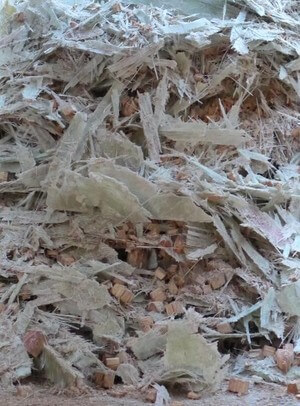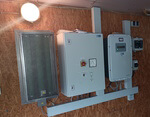News Release from Fraunhofer-Institut für Windenergiesysteme IWES
Wind Industry Profile of
Fraunhofer IWES develops concrete concepts for rotor blade recycling
The aim of the “Concept for recycling and reuse of rotor blades made of plastic composite materials” project – KoReNaRo for short – is to set up an economically feasible disposal strategy allowing as high a recycling quota as possible and thereby enabling a sustainable circular economy. The project is being funded to the tune of €150,000 in the scope of the German Federal Ministry of Education and Research’s (BMBF) “Research for Sustainable Development – FONA3” program and was launched in October 2021. The funding is currently for the conceptual design of a demonstration system. A decision will then be taken on whether implementation should be funded in a second phase.
To date, almost 30,000 wind turbines with a total output of more than 50 gigawatts (GW) have been erected in Germany. The new German government has announced that it aims to achieve climate neutrality by 2045. This will also involve new expansion targets for wind energy: around 70 GW more should be installed in offshore farms alone by 2045. At the same time, the Renewable Energy Law (EEG) subsidy for some existing onshore wind turbines ended last year, and some of them are now to be taken out of operation. For end-of-life (EOL) wind turbines no longer in operation, the recycling concepts currently available on the market are to be optimized or further developed towards a more circular economy. The focus here is in particular on how rotor blades can be recycled more efficiently, economically, and ecologically.
High-quality recycling for fiber composite materials
The scientists are aiming to develop a higher-quality recycling system for the entire EOL rotor blade. The important aspect is first of all to design an automated initial treatment for this, whereby the rotor blade can be more effectively dismantled and separated into its individual components. This creates recycling loops, increases the recycling rate, and saves costs. One possible location for a recycling station would be Bremerhaven.
“Bremerhaven wants to establish itself as a location for the disposal or recycling of wind turbines at an early stage. A study was recently commissioned in which the market segment was examined in greater detail and an initial logistics and disposal concept for onshore and offshore wind turbines was drawn up in order to be able to approach potentially interested companies with it,” says Dipl.-Ing. Nils Schnorrenberger, Managing Director of the Bremerhaven business development company BIS.
Another goal of the research project is to reuse the spar caps – which give the rotor blade its stability – from the rotor blades for other workpieces, preserving the existing good material characteristics as far as possible. That represents a challenge, as they are made up of centimeter-thick layers of glass fiber and carbon fiber composites.
The approach of recovering the high-quality glass fibers from the thick-walled flange and cap materials by means of slow-batch pyrolysis is also to be pursued further. The synthesis gases generated in this process can then be further utilized, among other things for energy or hydrogen production. The cost-efficiency and feasibility of this special process should be verified in the project using a test system.
 For the sandwich components in the rotor blade, balsa wood and plastic foams, (GRP balsa wood mixture, see picture on the right, image: Fraunhofer WKI) already known methods are to be rolled out on a large scale, in particular for recycling the balsa wood as wood foam.
For the sandwich components in the rotor blade, balsa wood and plastic foams, (GRP balsa wood mixture, see picture on the right, image: Fraunhofer WKI) already known methods are to be rolled out on a large scale, in particular for recycling the balsa wood as wood foam.
Project coordinator Dr.-Ing. Steffen Czichon, Head of Department Rotor Blades at Fraunhofer IWES, explains: “Holistic conceptualization is important to create a sustainable recycling concept for rotor blades that gives the wind industry a clear framework to create a competitive market for secondary products and disposal. For this, we need concrete implementation strategies. In the KoReNaRo research project, we at Fraunhofer IWES contribute our comprehensive competencies in component and material testing as well as our many years of experience in rotor blade development and manufacturing.”
Dr. Detlef Spuziak-Salzenberg, project manager at the Institute for Energy, Recycling and Environmental Protection (IEkrW), adds: “We have been able to impart our experience in batch pyrolysis, waste management, and the disposal market, especially also for the wind energy sector, into the KoReNaRo project in a profitable and targeted manner. These are fundamental components and steps for the validation of the new recycling methods for rotor blades.
The concept phase is followed by the implementation phase, where the research partners Fraunhofer IWES and IEkrW hope to realize the individual work steps together with cooperation partners. The planning of a recycling station should also be advanced in collaboration with an industry consortium.
Recycling procedures used until now
Accounting for approx. 97% of the total weight, concrete and steel make up the lion’s share of a wind turbine and can also be well recycled. However, there are also other materials in rotor blades and the cladding of the hub and nacelle: fiber composites with carbon and glass fibers.
The rotor blades and cladding removed during the dismantling of turbines are sawed into smaller pieces directly on site and transported away. The materials containing carbon are always neatly separated from the other material flows in order not to affect their recycling paths. The thick-walled flange areas with the metal bolts and metal sleeves also require separate processing for metal separation. What remains is the main part of the rotor blades with its matrix of glass fiber-reinforced plastic resins (GRP), including the so-called sandwich materials such as balsa wood and/or plastic foams made of PVC or PET. This material mix is currently usually shredded in a further processing step and used in the cement industry, substituting fossil fuel and mineral raw materials such as sand and chalk.
The carbon-reinforced plastic resins (CFRP) components are recycled by means of large-batch pyrolysis, in which the plastic contained is thermally decomposed and the fibers can be recovered. These can be processed into new non-woven materials, for example, or ground and employed in injection molding.
Currently, the initial treatment and recycling of rotor blades is largely based on the experience gained by dismantling companies: the first specific dismantling projects have been under way since 2019. A market for new secondary products now has to be developed or tapped. This is precisely where the KoReNaRo research project comes in.
- Source:
- Fraunhofer IWES
- Author:
- Press Office
- Link:
- www.iwes.fraunhofer.de/...
- Keywords:
- Fraunhofer IWES, Germany, recycling, rotor blade, composite material, blade, Balsa, wood, concept, foam, reuse, wind turbine

























